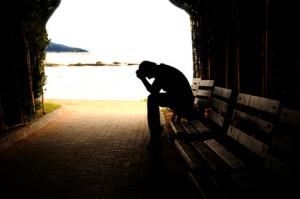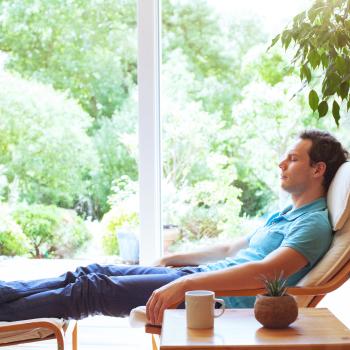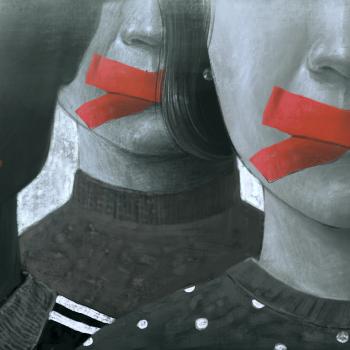I want to talk about suicide. It’s topical. In the past week and a half, two big-time celebrities – the fashion designer Kate Spade and the globetrotting chef Anthony Bourdain – took their own lives, sending shock waves through popular culture. But these deaths were only part of a much larger trend: the suicide rate in the United States has increased by 25% since 1999. It’s now the tenth-leading cause of death in the country (and among teenagers, it’s second only to accidents). The New York Times calls skyrocketing suicide rates in the U.S. a “public health crisis,” in the dry language of technocracy. But what if suicide isn’t something technical experts can solve, but something more complicated?
Here’s the issue: calling suicide a “public health crisis” implies that, at root, it’s another administrative problem – one that experts can solve if they only find and then apply just the right policies, from behavioral nudges to health insurance availability. In this technocratic view of society, nearly all problems are solvable by the application of expert knowledge – “effective strategies,” in social scientific bureaucratese. If you just find the right experts and the right people to manage the bureaucracy that supports those experts, then once-insuperable problems will disappear like paper picnic plates before a stiff summer breeze.
The technocratic view of problems is a natural fit with modern Western society’s self-image as Being In Control. Thanks to science, good management, and technology, we’re In Control of many of the contingencies of life that gave our ancestors so much grief. Vaccinations and antibiotics have greatly reduced the dangers of disease. The Green Revolution means that our food supply is pretty consistent. Airplanes – which are, let’s remember, giant hunts of metal and other notably heavy materials, including jet fuel, which is, you know, explosive – regularly take off, fly thousands of miles, and land without so much as a spilled drop of not-very-good coffee.
Also, we’ve been to the moon.
So we’re used to feeling In Control. We think that, when problems arise, we can solve them. When challenges crop up, we convene a committee or commission a research study. To solve social issues, we can call up healthcare experts, or social workers, or hotshot behavioral economists, and change people’s behavior for the better.
These assumptions are true, or partly true, in many contexts.
Suicide isn’t one of them.
***
Okay, maybe that’s an overstatement. Sometimes experts can identify “risk factors” and recommend “effective strategies” that can mitigate some of the public health aspects of suicide. But as the Times points out, although expert solutions have been remarkably plentiful in recent years, still suicide rates are increasing:
Treatment for chronic depression and anxiety – often the precursors to suicide – has never been more available and widespread. Yet the Centers for Disease Control and Prevention this week reported a steady, stubborn rise in the national suicide rate.
So why is it that we don’t Have Control over suicide, the way we Have Control over so many other problems? Why can’t we find the right combination of interventions, implement the right protocols, to rationally solve this problem?
Because suicide very often has to do with problems that can’t be solved.
We live in a society that believes in rationality. And I don’t just mean “believes” propositionally, as in “Wanda believes that the earth revolves counterclockwise from the vantage point of the North Pole.” I mean it more like “I believe in the Red Sox,” a kind of deep, unquestioning trust and (possibly absurd) loyalty. As a culture, we’re loyal to rationality.
But this means we only know how to deal with problems that are rationally solvable. Other kinds of problems – the problems that don’t fit this template – don’t make sense to us. We don’t know what to do with them.
***
A couple of months ago, I took a break from city life and spent four days in an Anglican monastery, one of the least modern, least rational places you could imagine.
It was a mostly silent retreat, meaning I was alone with my thoughts for four days running. I didn’t have internet access, and mostly left my phone off.
Walking through the woods that covered the river bluffs around the monastery, I found my thoughts returning again and again to, of all things, my mother. Like Kate Spade and Anthony Bourdain, she killed herself. Her death came at the end of a long life of alcoholism and social isolation.
Thinking about my mom is not something I enjoy doing.
But without anything else to distract me – no work, no internet, no Family Guy clips on YouTube – I couldn’t really help but think about her. I was no longer In Control. And it turned out that, when my brain didn’t have anything else to do, its default was to begin intently re-examining at my least pleasant, most awful set of memories.
The first half of the retreat was, therefore, not much fun. I found myself confronted hourly by intrusive, almost unendurable thoughts about my mother and the demons she carried (and left behind). I seethed with rage at her as if she had only died yesterday, although it was actually eight years ago.
But as I spent those four days meandering the grounds of the monastery, taking in silent, candlelit meals with the brothers and other guests, and writing copiously about non-research-related topics in my journal, I began to emerge out of the rage.
It actually took about two days. On the first day, I was just settling in to the foreign rhythm of early wake-ups, daily prayer offices, and silent meals. The second day, all the negative emotions hit. I felt like I was hauling around a psychological sack of lead bricks. I cursed my earlier self for booking this stupid retreat.
That second day was bad.
But on the third day, my feelings softened. I suddenly was able to think of my mother not with vituperation and anger, but…sadness. It was just really, really sad that she killed herself. So sad that I’ve mostly spent the past eight years trying not to think about it.
But when I finally was forced to think about it (because I put myself in a place where there was nothing else to do), the sadness eventually opened up into a kind of stricken peace. Just wandering around, kicking rocks, and looking at the views over the river, I was able to actually grasp – a little – the enormity of the sadness of what happened. And it was truly enormous. On the other side of enormity was grief. And grief, compared with the avoidance of enormity, was like a deep, warm bath.
***
The thing about monasteries is that they’re not exactly focused on satisfying desires. Quite the opposite, in fact.
Whether they’re Catholic, Anglican, or Theravada Buddhist, monasteries and convents are centered on the proposition that a deeper sense of meaning can be found in minimizing our cravings for comfort, sex, excitement, and other reward-system stimuli than in indiscriminately satisfying them. In this way, monasteries are directly opposed to our advertising-driven popular culture.
There’s almost no institution or viewpoint in modern public life that touts a similar anti-hedonistic message. Conservatives might cry “traditional values!” but they often valorize an economy that exploits people’s cravings, fears, and desires – or even uses advertising to create new ones. Progressives, meanwhile, claim to loathe capitalism, but they conspicuously love the individualism that capitalism affords – and ironically, they demographically dominate the advertising and media industries, which are the cultural drivers of capitalism.
So there aren’t many voices in 21st-century life advocating for the disciplined restraint of desires. Monasteries are kind of outliers.
It’s not coincidence, either, that monastic life aims at taming the reward system while its ethos rejects the need to be In Control of everything. These two values intrinsically go together. The Enlightenment philosopher John Locke, one of the principle founders of modern liberal thought, argued that the ethical aim of life was to increase pleasure and minimize pain. The liberal and Enlightenment tradition he helped inaugurate has always valorized rational problem-solving, empirical reasoning, and technological mastery: in other words, being In Control.
This isn’t to say that monks and nuns don’t try to manage practical problems. From the early Benedictines onward, many Christian monasteries were also major economic centers, managing fields and farms, building libraries, and training scholars. The monastery where I stayed recently has several large farm fields, raises chickens and geese, and offers paid retreat stays to guests. It’s a practical place. It’s also a very disciplined place. The floors are clean. Meals are on time. Wake-up times are early.
The monks are definitely in control. But they’re not, you know, In Control. That is, they don’t operate on the assumption that all problems can be rationally solved. I spoke with one of the brothers about the grief I was facing, and – I can’t tell you how relieving this was – he didn’t for a second try to manage my grief. He just listened, and then prayed for me and suggested I go walk in the woods.
Which I did.
***
Here’s the problem: what we want is to have our consumer lives, with all their comforts and perfectly calibrated distractions, while qualified experts manage the emotional risks of life for us. This, we think, will allow us to purchase experiences, enjoy the latest technology, and Instagram our vacation travels without the danger of spiraling into darkness.
This is why, whenever another celebrity suicide comes along, we immediately hear a maudlin chorus of calls for better mental health services, more effective screening, and less stigma surrounding psychological counseling. We want the problem managed. We want the right people to step in with the right solutions and fix things, like a logistics expert arranging a complex series of iPhone delivery shipments.
But we can’t manage the problem of life’s dark side. It will always creep in. It will come around the edges of the structures we build to keep it out. It will seep up from the sealed floors of ours minds. It will barrel past the protective walls of drugs, distractions, and carefully controlled environments.
It will get in.
The philosopher William James described two outlooks on life, the “healthy-minded” outlook and the “sick soul.” Paradoxically, he argued that the sick soul was actually the better outlook, because it acknowledged the unpleasant truths of life. By contrast, healthy-minded people focused instead on trying to optimistically solve their problems, which ultimately led to the willful denial of problems that couldn’t be solved. James wrote that
There is no doubt that healthy-mindedness is inadequate as a philosophical doctrine, because the evil facts which it positively refuses to account for are a genuine portion of reality; and they may after all be the best key to life’s significance, and possibly the only openers of our eyes to the deepest levels of truth.
If we adopt a technical stance toward all of life’s problems, then we’ll end up in an endless cycle of avoidance, denying the reality of problems that can’t be solved. The technocrat asks, Oh, someone’s mother committed suicide? Okay, then let’s solve the real problems: his low mood, poor sleep, and emotional restiveness. We can solve these with medications, cognitive-behavioral therapy, and exercise interventions.
The sick soul says, No, dummy – the problem is that his mother killed herself. But you can’t solve that problem. She’s dead. You can only go through the grief. And the more you try to solve grief as if it were a problem, the deeper it will recede like a scared animal into your bones, only to push back up years later, hungry and desperate, when you least expect it.
Now, I’m not saying that Anthony Bourdain or Kate Spade spent their lives avoiding problems. I don’t know enough about them to say anything about the demons they faced. My point is about suicide in general. And it’s no surprise that suicide rates in general are creeping up – despite well-designed programs intended to mitigate them – when the dominant story we tell ourselves is (1) that all our problems can be solved, and (2) that life’s highest objective is to maximize pleasure and minimize pain.
It’s also not coincidence that suicide is rising among Americans in tandem with opioid overdoses and alcohol-related deaths – so-called “deaths of despair.” At least some research suggests that the rise in drug overdoses is due to a massive increase in the availability of drugs, such as the tsunami of prescription painkillers that’s washed over the country. Using drugs or alcohol to numb the pain of emotional trauma is a pretty surefire way to end up in a cycle of despair. (My mother was a lifelong alcoholic, like many suicides.) But it’s also a narrowly utilitarian response to the natural incentives of emotional pain and psychological reward.
Refusing to acknowledge the many problems that can’t be solved – deaths of loved ones, the inevitable tragedy of life in a finite world – pushes us into narrower and narrower corners, trying always to stay In Control. And doggedly pursing happiness and pleasure while studiously avoiding pain leaves us unprepared to deal with approximately 50% of what life throws at us.
But we can’t be In Control, mitigate risk, and live full lives at the same time. We can’t expertise our way out of life’s most fundamental problems. At some point, we have to face the tragedy of life head-on – not escaping it through adventure, stimulation, drugs, or any other means. A stay at a monastery is a fine way to do this. But so is an unplugged weekend alone in the woods, or a daily routine of meditation, or a talk with a sympathetic friend.
In a world dedicated to healthy-minded optimism, it’s a paradoxical truth that the sick souls sometimes have the wisdom we need, even when the sick soul is us. And we need the calm places – the still, deep pools hidden away from the raging currents of life – to remember that not every problem needs solving, or can be solved. This doesn’t mean we’re helpless, or that we have to give up in the face of challenges. Quite the opposite. Like the Chinese principle of wu-wei, doing without doing, it’s often when we stop trying to solve our deepest, thorniest problems – when we accept the pain and lack of control that they force on us – that we find we’ve passed through them to the other side. If we want to end the epidemic of suicide, this is the lesson we have to teach.
___
Disclaimers: No, I’m not telling people that they should give up their medications or skip therapy. I’ve seen a therapist pretty much nonstop since my mom died, and it’s been incredibly helpful. I’m also not saying people shouldn’t encourage each other to reach out for help if they’re feeling desperate. These are good things. What I AM saying is that there’s a certain cognitive dissonance in the way we’re collectively responding to the crisis of suicide. We expect there to be a silver-bullet solution, and we expect to be able to continue to live the exact same types of lives we live now when that solution arrives. Neither of these things is going to happen. If we want to mitigate the suicide crisis, we actually have to change certain things about the way we live, or how we expect life to work. What I’m saying is that suicide is not like figuring out how to build a carburetor or identify a vaccine. It’s not dealing with, in one writer’s words, “closed systems.” It’s dealing with “open systems,” which are extremely complex and unpredictable. Expertise is useful for dealing with predictable, closed systems. It’s not as good for dealing with open systems. The way to deal successfully with open systems is often – not always, but often – a kind of humble but canny surrender, not an attempt to control all the variables.
___
Edits: Fixed a couple of typos.













